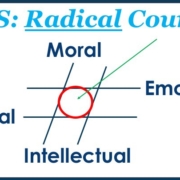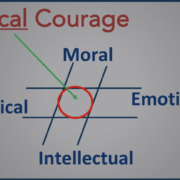Poor Leadership is an Aberration, Not a Norm. What you can do to make your subordinate leaders even better.
Do you have to put up with bad behavior from your subordinate leaders as the price of getting results?
It’s easier to rationalize poor leadership practices if you believe these are the norm. The good news is that most of the leaders in your organization seem to be doing a good job, which means you should lower your tolerance level for toxic behavior.
Bad leadership behaviors scream so loudly that it’s hard to hear reports about the good ones.
Just recently, we’ve seen the shocking hypocrisy of Ivy League Presidents who could not bring themselves to condemn Hamas’ atrocities, even as they enforce ideological speech codes and use DEI administrators as thought police. Government officials have engaged in outright lies and manipulation during COVID, along with some high-profile do-as-I-say-not-as-I-do mandate flaunting. The rules are for the little people.
It’s no wonder that trust in officials is at an all-time low since Pew Research began its trust in government survey in 1958. Back then, over 70 percent of Americans trusted the government. Only 25% of Democrats and 8% of Republicans today say they do. Trust in the military is at a historical low.
The news gets better as you come closer to home.
A recent Pew Research survey suggests that most American employees highly regard their supervisors, with 55% reporting their boss as Very Good or Excellent and 26% selecting Good.
Fifty-eight percent or more of respondents said that their bosses were confident, capable, fair, and caring. Only twelve or thirteen percent characterized their supervisors as arrogant, dismissive, unpredictable, or aggressive.
This chart helps you determine what your subordinate leaders need.

In short, a small percentage of leaders engage in toxic behaviors and drag your business down. Most are leading well. Here’s how to handle each type.
- Proper-Fits. (culture and skill fit) Invest in these leaders with more coaching and development opportunities. Those skills are infinitely upgradable, making your business thrive even more. When you invest in them, you signal that you appreciate and reward excellence.
- Culture Fit, Skill Misfit. Train them on the specific job skills they lack and upgrade their leadership qualities. They care for your employees, so boosting their capacity will increase their confidence and respect.
- Skill Fit, Culture Misfit. These are your talented people engaging in toxic behavior and dragging your company down. You have to take clear action to improve their behavior, or people will believe you condone it. If the Culture Misfits don’t improve, you need to fire them or they will demoralize your proper-fits, who will vote with their feet.
- Misfits. Easy call. Fire them. They’ll fit somewhere else.
If you are ready to help the excellent leaders in your company upgrade their skills, let’s discuss my two trademarked programs, Becoming a WHY Leader® and Building an Inspiring Culture®, or an off-site experience at a spectacular national park or historical venue.
Send me an email to schedule a call, or click here.










